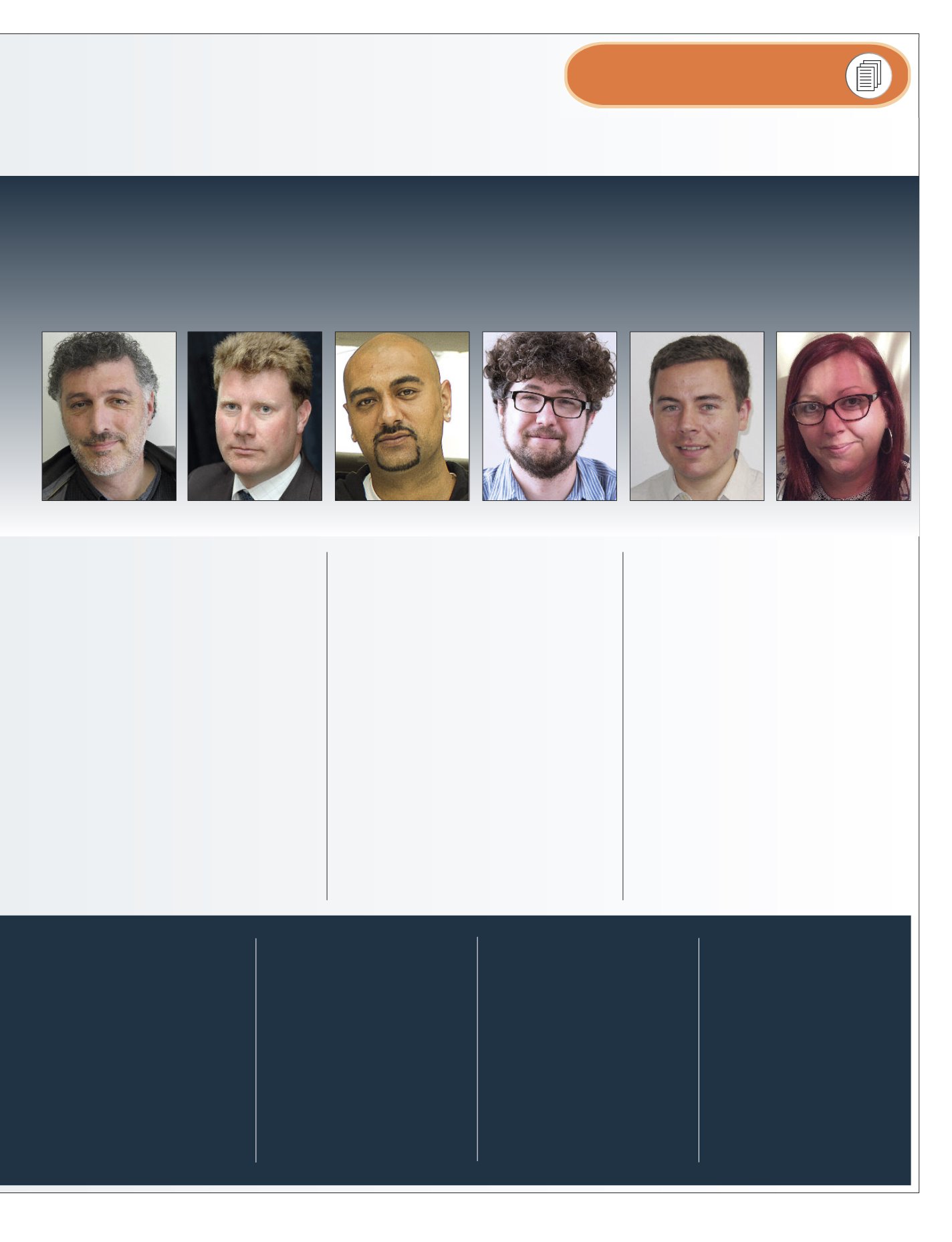
leave organisations, they leave managers,’ he added,
‘so we’ve put a lot into improving managers.’
‘What’s difficult for staff to feel they manage is
multiple requests from a lot of people wanting loads
of different things,’ said Bamford. ‘We need to develop
a growth mindset for our staff, as that’s what we
want for people they work with.’
CGL believed that ‘top down doesn’t work’, he said.
‘We know that most people are interested in what’s
going on around them or their first line manager. It’s
pointless pitching things top down.’ So a flat hierarchy
needed to go hand in hand with things that increased
reliability – awareness of risk, expertise and the
ability to adapt to the unexpected.
Staff were encouraged to reflect, plan, act, observe
and evaluate, and were introduced to the ‘dreaded
drama triangle’ during training – an illustration of
how a worker can become a ‘rescuer, victim or
persecutor’ in the workplace and recognise what
triggers the situation.
‘Profound simplicity, such as five ways to
wellbeing’ was also an aim, he said, ‘because
simplicity of focus is effective.’
There was a positive side to being asked to do
more with less, said Bamford, in that they were ‘also
doing more with more – linking with people we’ve
never linked with before.’
He also had questions for FDAP: ‘What are the
shared values for the field?’ and ‘How do we extend
the ladder of professional support to include the peer
mentoring community?’
Sunny Dhadley, manager of Wolverhampton’s
Service User Involvement Team (SUIT) was speaking
next, and well placed to offer answers. He set up SUIT
ten years ago, while still in active addiction and began
attending meetings ‘where people were saying the
same old rhetoric’. He realised that by sharing
knowledge between his peer-led organisation and the
workforce, they could develop competence and make
treatment more compassionate.
‘We have a fantastic treatment system in this
country and should be very proud of it – but we need
to look at ways of doing more,’ he said.
‘Initiatives don’t need to cost the earth – we draw
upon resources in society,’ he explained. With an
annual budget ‘that costs less than sending an adult
to our local cat B prison’, SUIT has worked with 522
different agencies and supported 146 people back
into work in the past five years, as well as offering ‘a
huge range of activities’. Top ten interventions have
related to welfare, employment, education,
emergency food, volunteering, housing, IT, healthcare,
criminal justice and treatment.
‘We see a huge amount of inequality and low
levels of literacy and numeracy,’ he said, mentioning
that 24 per cent of prisoners had been in care as a
child, with many having the English and maths skills
of a primary child, so there were ‘high levels of
vulnerability’.
We needed to ask, ‘what are we doing to support
people’s dream happening?’ he suggested.
Sam Thomas from Making Every Adult Matter
(MEAM) added to the picture of working with people
with multiple needs, talking about the ‘sheer
complexity of the world that clients are trying to
make sense of and that practitioners are trying to
make work’.
Around half of people with substance misuse
issues also had another problem such as offending or
July/August 2016 |
drinkanddrugsnews
| 17
Find more on workforce at:
SAM THOMAS, Making
Every Adult Matter
OLIVER STANDING,
Adfam
DAVID BAMFORD,
Change, Grow, Live
GUY PINK, Addaction
SUNNY DHADLEY, SUIT
play when attempting to change
workers’ behaviours.
In recent times an important
paradigm shift has occurred, as training
has been reconceptualised with the
broader, more diverse and more
comprehensive concept of ‘workforce
development’. This is a multi-faceted
approach, which addresses the range of
factors impacting on the ability of the
workforce to function with maximum
effectiveness in responding to alcohol
and other drug-related problems.
Workforce development should have
a systems focus; unlike traditional
approaches, this is broad and compre-
hensive, targeting individual, organisa-
tional, and structural factors, rather than
just addressing education and training of
individual mainstreamworkers.
Without tackling the broad array of
systems factors that determine and
shape what workers and services can
do we will be forever limited to
ineffective, costly and inappropriate
responses. A workforce development
approach that incorporates a systems
perspective allows issues related to
social equity and work conditions,
government policies and organisational
structures to be seen as central. It then
allows other factors such as worker
wellbeing, recruitment and retention,
career pathways, supervision and
support to be addressed as pivotal
concerns in regard to knowledge and
skill transfer.
Without taking this broader
approach, transient training program-
mes will continue to soak up limited
funds and produce relatively modest, if
any, change in services and programs.
Although it may seem counter-
intuitive that training alone cannot
deliver pressingly needed changes and
supports to our crucial AOD services,
the evidence is abundantly clear.
Training is, and will always be, only a
small part of the solution. A broad and
comprehensive workforce development
approach that focuses on systems
issues is what is required.
For further details and resources visit
NCETA’s website:
Professor Ann M Roche is director,
National Centre for Education and
Training on Addiction (NCETA), Flinders
University, South Australia
PATTI BODEN, CQC
inspection manager
For change


